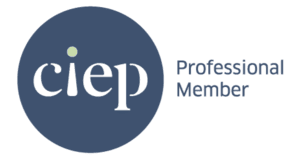A concept paper is a brief document that presents an idea, project or research proposal before full development. It outlines the problem, objectives, significance and methodology to assess feasibility and gain approval. Concept papers are commonly used in academia, business and grant writing to secure funding or support.
This post explores the key aspects of a concept paper, including its purpose, structure, length and target readers. It discusses the essential components needed to create a well-structured document and provides a detailed template for guidance. Additionally, it includes expert writing tips, useful resources and a sample concept paper to illustrate best practices. The post also examines how editing services can refine and finalise a concept paper for approval or funding.
- What is concept paper?
- Concept paper template
- Tips and resources for writing a concept paper
- Sample concept paper
- Using editing services to finalise a concept paper
What is concept paper?
A concept paper is a concise document that outlines an idea, project or research proposal before developing it into a full proposal or study. It serves as an initial blueprint, helping stakeholders understand the purpose, scope and potential impact of the idea.
A concept paper may be referred to by different names depending on the field, purpose or institution. Some commonly used alternatives include:
- Project proposal: Used in business, research and grant applications to outline a project idea before full proposal development.
- Research outline: Common in academic settings when presenting a preliminary research idea.
- White paper: Used in government, business or technical fields to present solutions, policies or innovations.
- Idea paper: A less formal version, often used in brainstorming or early-stage project discussions.
- Issue brief: Found in policy development and advocacy to highlight a problem and suggest possible interventions.
- Pre-proposal: Used by funding agencies as an initial screening document before a detailed grant proposal submission.
- Executive summary: A concise version used in business or policymaking to summarise key project details.
A concept paper is useful in various situations, including:
- Funding proposals: Organisations, researchers or businesses write a concept paper to secure funding from grant agencies, investors or sponsors.
- Academic research: Students and scholars develop a concept paper to present research ideas to professors, academic committees or funding bodies.
- Business projects: Companies use a concept paper to outline new products, services or strategies before investing time and resources.
- Policy development: Government agencies or advocacy groups create a concept paper to propose new policies or programmes.
- Community initiatives: Non-profit organisations write a concept paper to introduce social development projects to donors or partners.
What is the purpose of a concept paper?
A concept paper serves as a preliminary document that outlines an idea, project or research proposal before full development. It helps clarify objectives, assess feasibility and gain support from stakeholders. In other words, it acts as a foundation for proposals, research studies or business projects. It increases the chances of approval and ensures a clear direction for implementation.
Key purposes of a concept paper
- Clarifies the idea: It defines the problem, objectives and significance of the project.
- Assesses feasibility: It helps determine whether the project is practical and achievable.
- Secures funding or approval: It serves as a persuasive tool for gaining support from funding agencies, investors or decision-makers.
- Provides a structured plan: It outlines key components such as methodology, expected outcomes and resource requirements.
- Saves time and resources: It ensures that the project is well-thought-out before committing to full development.
What is the length of a concept paper?
The length of a concept paper depends on its purpose, audience and complexity. However, most concept papers are short and concise, typically ranging from 1 to 5 pages.
- Academic research concept papers are often 2 to 3 pages, focusing on the research problem, objectives and methodology.
- Grant proposals concept papers are typically 3 to 5 pages, including a budget overview and expected impact.
- Business or policy concept papers can be 1 to 4 pages, depending on the level of detail required.
Who is the target reader of concept papers?
The target reader of a concept paper depends on its purpose and field. Concept papers are written for individuals or organisations that evaluate ideas, fund projects or approve research.
- Academic committees: Universities, professors and research supervisors who assess research viability before approving full proposals.
- Funding agencies: Government bodies, private foundations or NGOs that provide grants for research, business projects or community initiatives.
- Investors and business partners: Companies or stakeholders interested in funding new business ventures or innovations.
- Government policymakers: Officials who review policy-based proposals for community development or legislative initiatives.
- Non-profit organisations and donors: Charitable institutions that support social projects and development programmes.
What is the structure of a concept paper?
A concept paper follows a structured format that presents an idea, project or research proposal clearly and concisely. It includes key sections that help stakeholders understand the purpose, feasibility and significance of the idea.
Key components of a concept paper
- Title
- Clearly reflects the main idea or focus of the project
- Should be concise and informative
- Introduction
- Provides background information on the topic
- Explains the issue or opportunity the project aims to address
- Statement of the problem
- Defines the specific problem or gap in knowledge
- Highlights why the issue is important and needs to be addressed
- Objectives
- Lists the specific goals the project aims to achieve
- Uses clear and measurable statements
- Significance of the study/project
- Explains the potential impact of the project
- Highlights the benefits for stakeholders, such as researchers, businesses, communities or policymakers
- Methodology
- Describes the approach, framework or strategies for implementation
- Includes data collection methods, research design or project execution plans
- Budget and resources (if applicable)
- Estimates the financial, human or material resources required
- Helps funding agencies or decision-makers evaluate feasibility
- Expected outcomes
- Specifies the anticipated results and contributions of the project
- Shows how the project will address the stated problem or gap
Concept paper template
1. Title
- What is the main idea or focus of the project?
- Is the title concise and informative?
2. Introduction
- What is the background of the topic?
- Why is this issue important?
- What is the broader context (e.g. social, economic or academic relevance)?
3. Statement of the problem
- What specific problem or gap does this project address?
- Why is this problem significant?
- Who is affected by the problem?
- What evidence supports the existence of this issue?
4. Objectives
- What are the specific goals of the project?
- What does the project aim to achieve?
- Are the objectives clear and measurable?
5. Significance of the study/project
- Why is this project important?
- Who will benefit from this initiative?
- What contributions will it make to society, research or industry?
6. Methodology
- What approach or framework will be used to implement the project?
- What strategies or methods will be applied?
- How will data or project outcomes be collected and measured?
- What timeline will the project follow?
7. Budget and resources (if applicable)
- What financial, human or material resources are required?
- How will the budget be allocated?
- Who will fund or support the project?
8. Expected outcomes
- What are the anticipated results?
- How will the project solve the identified problem?
- What impact will the project have on its target audience or field?
Tips and resources for writing a concept paper
A concept paper should be clear, concise and persuasive. Following best practices can improve readability and effectiveness.
Tips for writing a strong concept paper
- Start with a clear objective:Define the purpose and expected outcomes before writing.
- Use simple and precise language:Avoid jargon or overly complex terms.
- Keep it concise: Limit unnecessary details and focus on essential points.
- Follow a logical structure: Use headings and subheadings to improve readability.
- Support claims with evidence: Use statistics, previous research or real-world examples.
- Tailor the content to your audience: Adjust language and details based on whether the reader is a researcher, investor, policymaker or funding agency.
- Highlight significance and impact: Clearly explain why the project matters and who will benefit.
- Ensure clarity in methodology: Describe how the project will be executed in practical terms.
- Proofread and revise: Check for grammar errors, inconsistencies and unclear sections.
Useful resources for writing a concept paper
- Harvard University: Writing research proposal writing
- Purdue OWL: Academic proposals
- National Science Foundation: Proposal & award policies guide
- USAID: Proposal summary guide
- European Commission: Proposal guidelines
- United Nations concept paper template
- World Bank Funding proposal template
- Bill & Melinda Gates Foundation proposal guidelines
Sample concept paper
Title: Enhancing Digital Literacy in Rural Communities: A Community-Based Training Programme
Introduction
Many rural communities lack access to digital education, limiting opportunities for employment and communication. This project aims to provide free digital literacy training to bridge the knowledge gap.
Statement of the Problem
Limited digital skills prevent individuals in rural areas from accessing online services, job opportunities and essential information. Without intervention, the digital divide will continue to widen, increasing social and economic disparities.
Objectives
- To provide basic digital literacy training for 500 individuals within one year
- To equip participants with skills in internet usage, online safety and job-related digital tools
- To establish a sustainable community-based training model
Significance of the Study/Project
This project will empower rural residents with essential digital skills, improving employability and access to online resources. It will also create long-term benefits by fostering digital inclusion in underserved areas.
Methodology
Training sessions will be conducted in community centres using a structured curriculum covering basic computer skills, internet navigation and cybersecurity. Local volunteers and digital experts will facilitate the programme, ensuring accessibility and effectiveness.
Budget and Resources
The project requires funding for laptops, internet access, training materials and facilitators. Estimated costs are £20,000, which will be sourced from local government grants and private sponsors.
Expected Outcomes
By the end of the programme, participants will gain confidence in using digital tools for job applications, education and online communication. This initiative will reduce digital illiteracy, creating more opportunities for economic and personal growth.
This concept paper provides a structured plan to address digital illiteracy in rural areas, ensuring that individuals gain the skills needed to thrive in the digital age.
How do editing services help finalise a concept paper?
Editing services refine a concept paper by improving clarity, coherence and overall quality. Different types of editing enhance various aspects of the document to ensure it meets professional and academic standards.
- Corrects grammar, spelling and punctuation errors
- Ensures consistency in formatting and style
- Eliminates minor mistakes that could weaken credibility
- Focuses on sentence structure, word choice and readability
- Improves flow and eliminates awkward phrasing
- Ensures adherence to style guides or institutional requirements
- Enhances sentence-level clarity and conciseness
- Improves tone, voice and overall readability
- Ensures logical connections between ideas
- Evaluates structure, coherence and argument strength
- Identifies gaps in content and suggests improvements
- Ensures the concept paper effectively communicates its purpose and significance
Key takeaways
A concept paper is the first step in developing a research proposal, business project or funding request. It clearly outlines the problem, objectives, significance and methodology, helping stakeholders assess feasibility and impact. Following a structured format, using effective writing strategies and leveraging professional editing services can help ensure the concept paper is persuasive, well-organised and ready for approval.
Contact me if you are an academic author looking for editing or indexing services. I am an experienced editor offering a free sample edit and an early bird discount.


